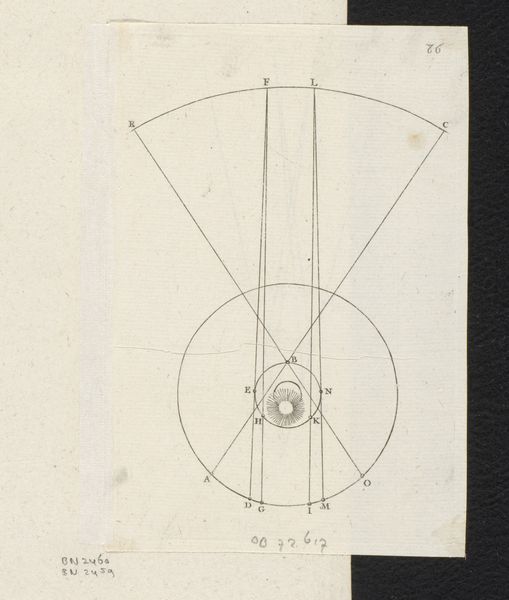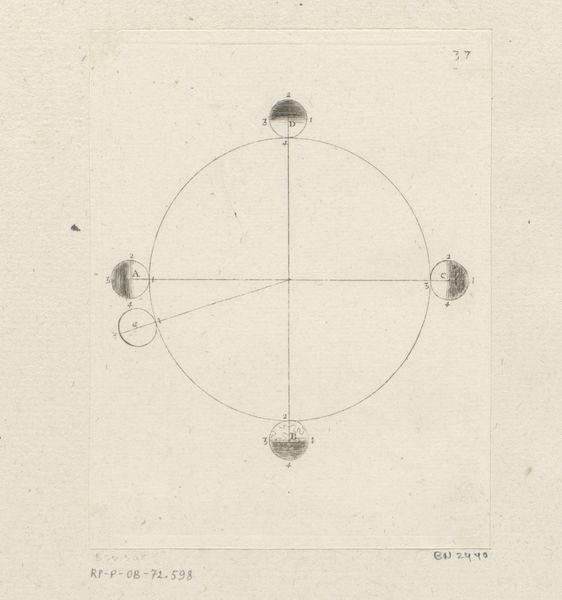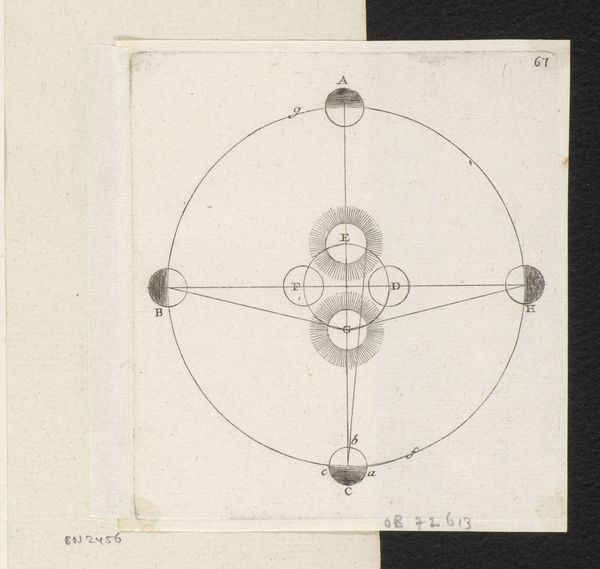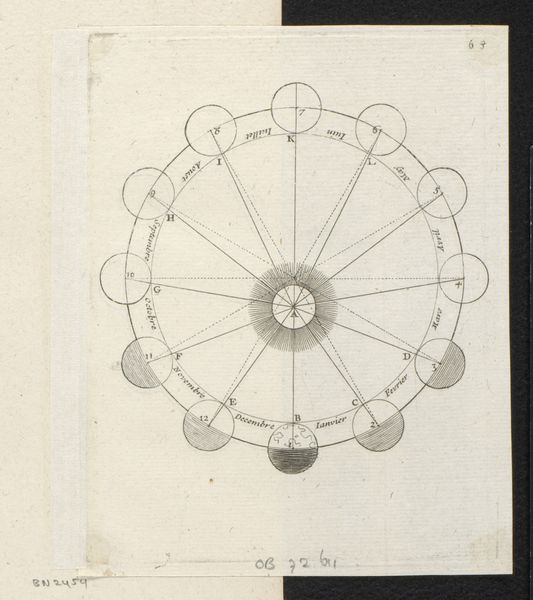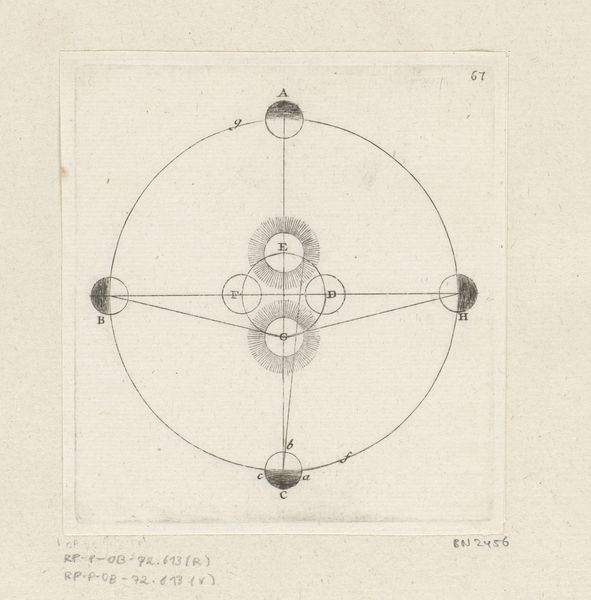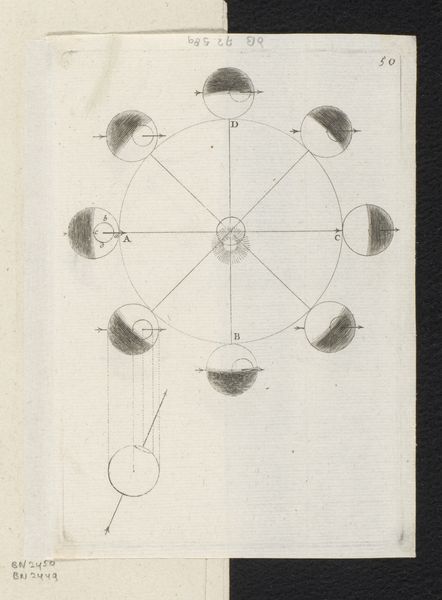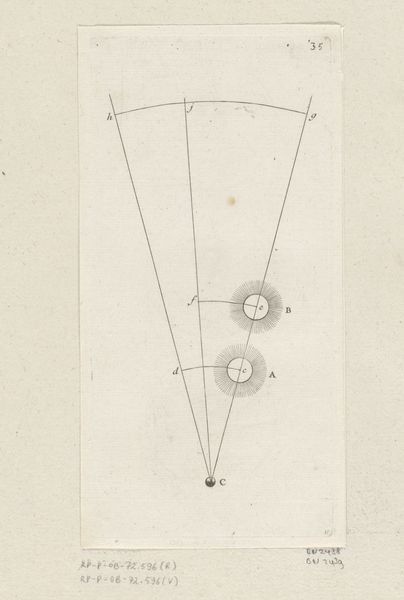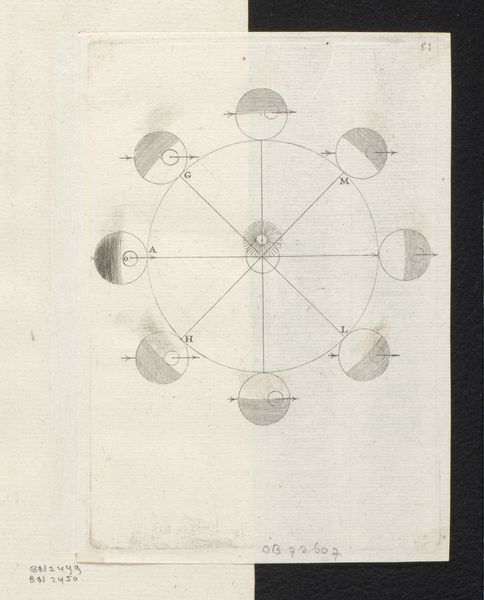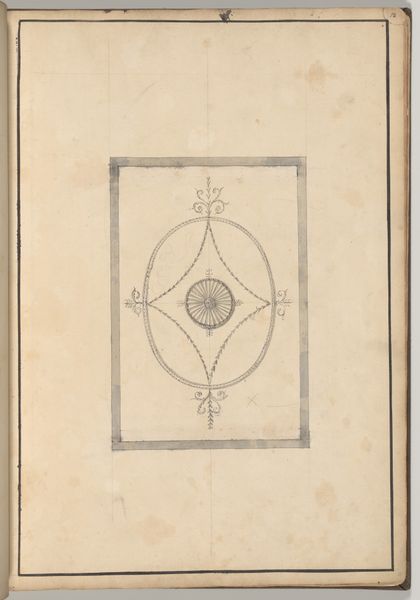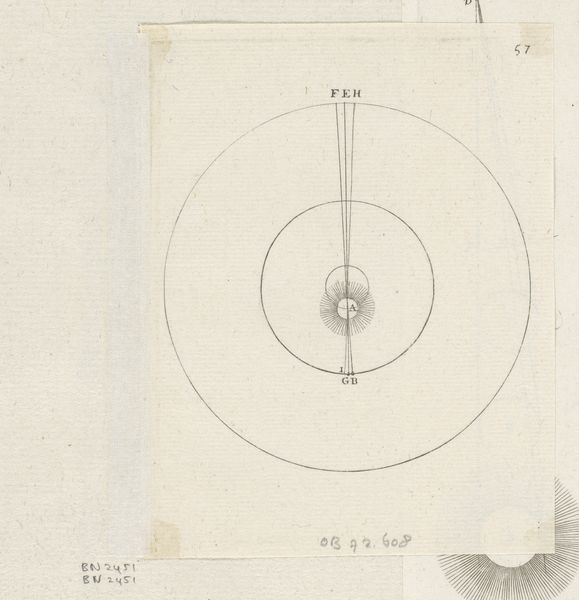
drawing, print, paper, engraving
#
drawing
#
aged paper
#
hand written
#
baroque
# print
#
sketch book
#
hand drawn type
#
paper
#
personal sketchbook
#
hand-drawn typeface
#
fading type
#
geometric
#
stylized text
#
line
#
sketchbook drawing
#
sketchbook art
#
engraving
Dimensions: height 141 mm, width 100 mm
Copyright: Rijks Museum: Open Domain
Curator: What strikes me immediately is how delicate and precise this feels. Like a whispered secret about the cosmos. Editor: You've put it perfectly. What we’re looking at is a print titled "Four Positions of the Earth on the Ecliptic" by Sébastien Leclerc I, created in 1706. It’s an engraving on paper, part of the Rijksmuseum's collection. Curator: It’s the circles within circles, the meticulous lines… it speaks of a time when understanding the universe felt like unlocking sacred geometry. Is that aged paper, almost parchment-like? I can almost feel the artist’s hand carefully plotting these celestial mechanics. Editor: Yes, the paper does lend it a certain gravitas. What’s interesting here is Leclerc’s role within the French Académie Royale des Sciences. He wasn't just an artist; he was illustrating scientific principles for a wider audience, translating complex data into something visually comprehensible and persuasive. Curator: Persuasive…that's a great word for it. I find it charming to see the little shadowed Earths placed on the cardinal points of the year. Makes me wonder how accessible such depictions were at that time. Was it more for instruction or contemplation? Editor: Probably both. Images like these played a key role in popularizing the heliocentric model of the solar system. Think about it – before photography and CGI, this was how people visualized the Earth's movement. It’s part education, part propaganda for the new science, wouldn’t you say? It’s subtly shifting worldviews. Curator: Subtlety indeed. Something about it has calmed me - I imagine it would also trigger a sense of cosmic awe for anyone pondering their place in it all. Thanks for shedding so much historical and political light on it! Editor: It’s always a privilege to engage with these artifacts, to consider how they shaped not only scientific understanding, but also popular imagination. They're so much more than pretty drawings on old paper.
Comments
No comments
Be the first to comment and join the conversation on the ultimate creative platform.
